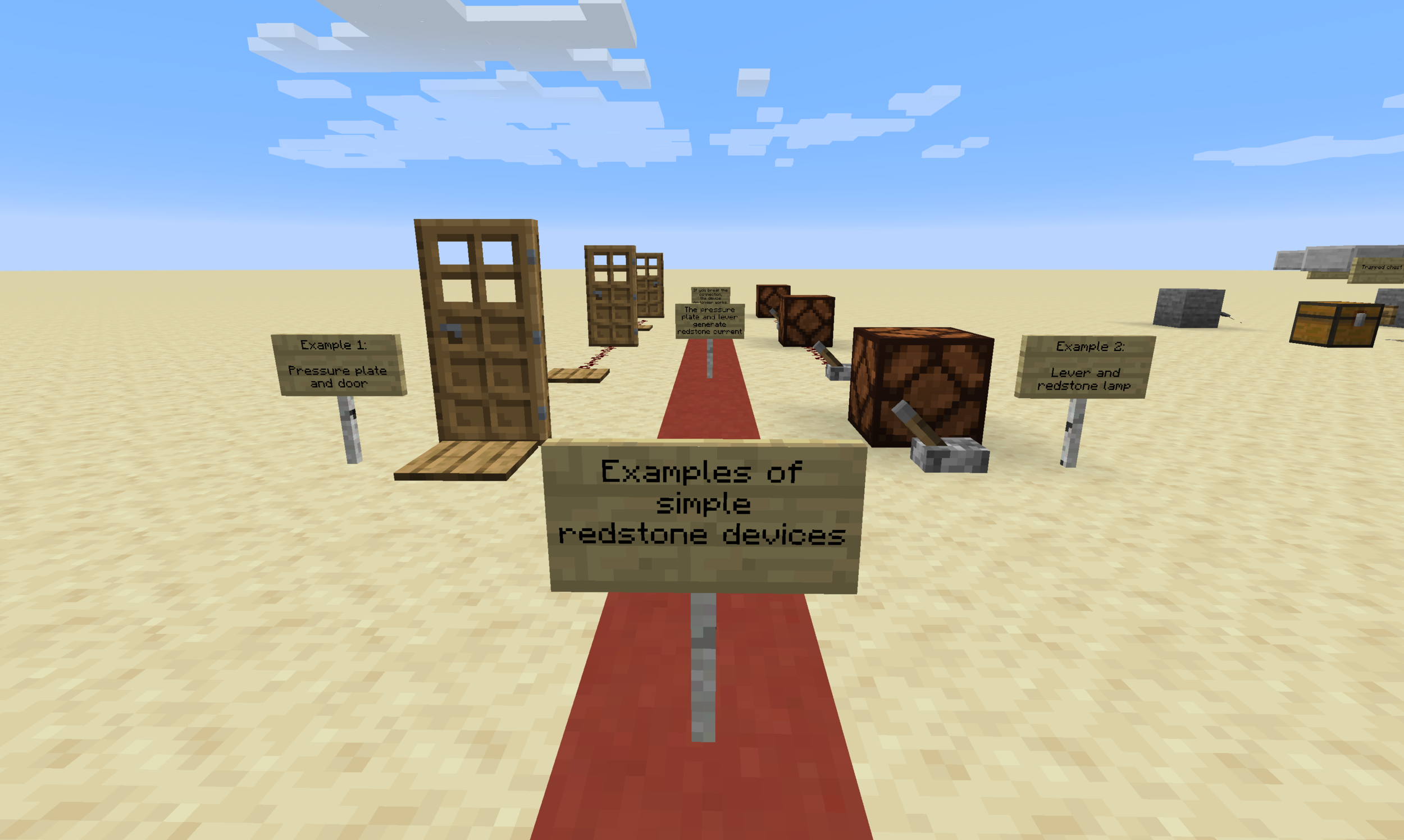Redstone Fully Explained is a series of tutorials explaining how to work with redstone in Minecraft. It aims to be simple, clear, and thorough, teaching you the underlying principles of how redstone works.
The project is a work-in-progress, with 4 chapters published as of May 29 2020, and more in the works.
Keep creepers far, far away!
Maybe you've had the experience before where you follow an online tutorial to build some redstone device -- say, an automated chicken farm. But then when you're done, it doesn't quite work. And you don't really know why, or even how to start figuring out why, so you end up rewatching that 15-minute chicken farm video, painstakingly looking at the placement of every single block until you find the error.
What a painful process! And if you want to change anything else -- maybe the farm's appearance, or layout, or scale -- you might not know how.
I don't want to just teach you how to build that chicken farm, I want to teach you how and why it works, so that when you want to fix it, or modify it, or build some new redstone device, you've got the versatility and confidence you need to do exactly that.
Java vs. Bedrock Editions
The majority of redstone mechanics work the same on Java and Bedrock Editions of Minecraft, but there are some important differences. I’ll do my best to point these differences out as we go. However, I play mostly on Java Edition, so it’s possible I’ll miss some. Please point out any mistakes on the subreddit or by email.
Companion Map
On Java Edition, learn by doing with the Redstone Fully Explained Companion Map, an interactive creative map designed to accompany the tutorials.

